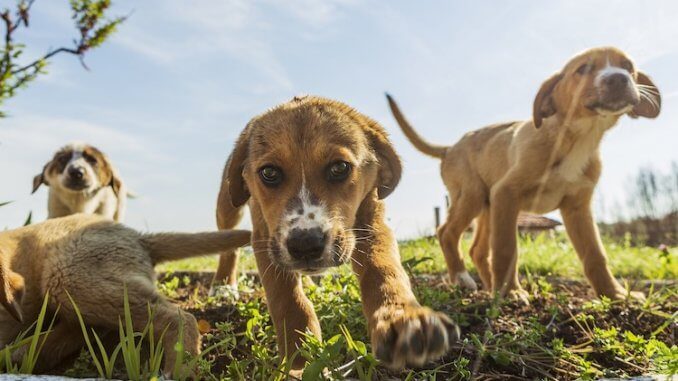
If you’re on the lookout for a dog with boundless energy and a heart full of love, the Beagle Lab Mix, or Beagador, might just be your perfect match. These adorable pups combine the best traits of the Beagle and the Labrador Retriever, resulting in a friendly, playful, and intelligent companion.
I remember the first time I met a Beagador. It was at a local dog park, and this little bundle of joy was zipping around, making friends with every dog and human in sight. The mix of the Beagle’s curiosity and the Labrador’s enthusiasm was undeniable, and I was instantly smitten.
Since then, I’ve had the pleasure of getting to know several Beagadors, and they never cease to amaze me. Their affectionate nature and eagerness to please make them fantastic pets. Whether you’re an active individual or a family with kids, a Beagador can bring joy and excitement to your home.
TABLE OF CONTENTS
- Beagle Lab Mix Quick Breed Summary
- Origins of the Beagle Lab Mix
- Physical Appearance of the Beagle Labrador Mix
- Temperament of the Beagle Lab Mix
- Taking Care of a Lab Beagle Mix
- How to Train a Beagle Lab Mix
- The Most Common Health Problems in a Lab Beagle Mix
- Costs of Owning a Beagle Lab Mix
- FAQs: Get to Know the Beagle Lab Mix More
- So, Is the Beagle Lab Mix Right For You?
- Other Labrador Retriever and Beagle Mixes
Beagle Lab Mix Quick Breed Summary
Origins of the Beagle Lab Mix
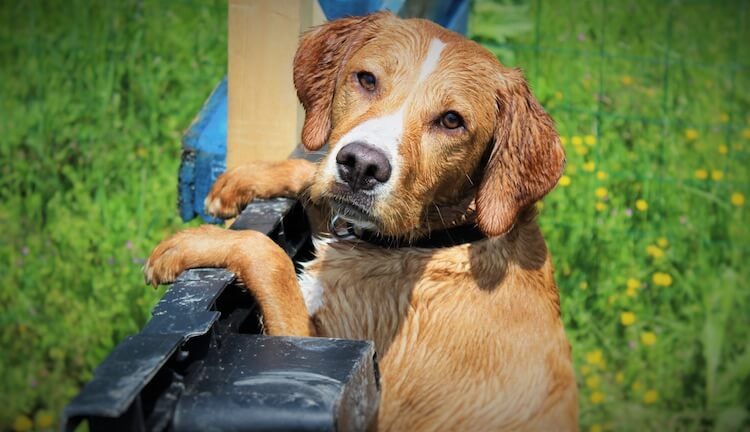
From Adobe Stock
Understanding the origins of the Beagle Lab Mix requires a look at the histories of its parent breeds. Both the Beagle and the Labrador Retriever have rich backgrounds that contribute to the unique characteristics of the Beagador.
The History of the Beagle
The Beagle’s history dates back to ancient times, with roots tracing back to Roman times and beyond. Originally bred as scent hounds, Beagles were primarily used for hunting small game such as rabbits. Their keen sense of smell and sturdy build made them excellent hunting companions. Over the centuries, Beagles became popular in England for their hunting prowess, and they were often found in the packs of the English aristocracy.
As their reputation grew, Beagles were eventually brought to America in the 19th century. Here, they continued to excel as hunting dogs and quickly gained popularity as family pets. Their friendly disposition, combined with their compact size and impressive tracking abilities, made them a favorite among dog lovers.
The History of the Labrador Retriever
The Labrador Retriever, on the other hand, has a more recent history but an equally fascinating one. Originating from Newfoundland, not Labrador as the name suggests, these dogs were initially known as St. John’s dogs. They were used by fishermen to retrieve nets and catch fish that escaped from fishing lines. Their strong swimming ability and gentle mouth made them ideal for these tasks.
In the early 1800s, the breed was brought to England, where it was refined and developed into the Labrador Retriever we know today. British breeders focused on enhancing the breed’s hunting and retrieving skills. Labradors quickly became prized for their versatility, intelligence, and friendly nature. Today, they are not only popular hunting dogs but also beloved family pets and service animals.
The History of the Beagador
The Beagador, or Beagle Lab Mix, is a more recent hybrid breed that has gained popularity over the past few decades. As mixed breeds became more sought after for their unique traits and hybrid vigor, the combination of the Beagle and Labrador Retriever emerged as a favorite. The goal was to blend the best qualities of both breeds into one delightful package.
The result is a dog that inherits the Beagle’s keen sense of smell and inquisitive nature, along with the Labrador’s friendly and outgoing personality. Beagadors have become cherished pets for their adaptability, intelligence, and affectionate demeanor. While not recognized by major kennel clubs, these dogs have found a special place in the hearts of many dog lovers around the world.
Physical Appearance of the Beagle Labrador Mix
When it comes to the physical appearance of the Beagle Lab Mix, you’ll find a delightful combination of traits from both parent breeds. These dogs are typically medium-sized, with a sturdy build and an expressive face that captures the best of both the Beagle and the Labrador Retriever.
Height and Weight
Beagadors generally fall into the medium-size category, reflecting a blend of their parent breeds. On average, they stand between 18 to 24 inches tall at the shoulder. Their weight can vary, typically ranging from 30 to 60 pounds. Of course, factors like diet, exercise, and genetics play a role in determining an individual dog’s size.
In my experience, Beagadors tend to be well-proportioned and agile, making them great companions for various activities. Their size strikes a perfect balance—not too small to be fragile, yet not too large to handle easily. This makes them a versatile choice for both city and country living.
Coat and Color
One of the most striking features of a Beagador is its coat. They usually have a short to medium-length coat that is dense and water-resistant, much like their Labrador parent. The texture can vary slightly, with some Beagadors having a sleeker coat, while others might have a bit more fluffiness.
The colors of Beagadors can be quite diverse, reflecting the variety seen in both Beagles and Labradors. Common colors include black, brown, white, and combinations of these. You might find a Beagador with the classic tricolor pattern of a Beagle—black, white, and tan—or a solid color similar to a Labrador. This variety in coat color and pattern adds to their charm and uniqueness.
Other Physical Features
Beagadors often inherit the expressive eyes of the Beagle, which can be brown or hazel. Their ears are typically floppy, a trait from both parent breeds, and add to their endearing appearance. The muzzle is usually a blend of both breeds, not too long or short, giving them a balanced look.
Their body is muscular and athletic, with a tail that might have the characteristic wagging motion of a Labrador. Beagadors are known for their happy, wagging tails that seem to always be in motion, especially when they’re excited or curious.
Temperament of the Beagle Lab Mix

From Adobe Stock
Imagine coming home to a furry friend who greets you with boundless enthusiasm and a wagging tail that could rival a metronome. Picture a dog that’s always ready for an adventure, whether it’s a hike in the woods or a game of fetch in the backyard. This is the everyday joy of living with a Beagle Lab Mix, a breed that brings a perfect blend of fun, intelligence, and affection into your life.
Friendly and Sociable
One of the first things you’ll notice about a Beagador is their friendly and sociable personality. They thrive on interaction, whether it’s with family members, strangers, or other dogs. I remember the first time I met a Beagador named Max at a friend’s barbecue. He greeted everyone with a wagging tail and a big smile, making friends instantly. This breed is often the life of the party, bringing warmth and cheer wherever they go.
Their sociability makes them great family pets. They love being involved in family activities and are excellent with children. Their patience and gentle demeanor mean they can handle the energy and excitement that kids bring. However, their sociable character also means they don’t do well being left alone for long periods. They crave companionship and can become anxious or bored if isolated.
Intelligent and Curious
Beagadors inherit a strong sense of curiosity from their Beagle parent and intelligence from both the Beagle and Labrador. This combination makes them highly trainable and eager to learn new things. Training a Beagador can be a rewarding experience as they respond well to positive reinforcement and enjoy the mental stimulation that comes with learning commands and tricks.
I’ve had the pleasure of training a Beagador named Bella, and her enthusiasm for learning was remarkable. She picked up basic commands quickly and thrived on puzzle toys and interactive games. Their intelligence also means they can sometimes be a bit mischievous. You might find your Beagador getting into things they shouldn’t if they’re not adequately entertained or stimulated.
Energetic and Playful
These dogs have a zest for life and love to play. Whether it’s a game of fetch, a run in the park, or exploring new trails, Beagadors are always up for an adventure. Their playfulness makes them excellent companions for active individuals or families who enjoy outdoor activities.
I recall an afternoon spent at the beach with a Beagador named Daisy. She couldn’t get enough of the water, splashing around and chasing waves with endless enthusiasm. Their boundless energy means they need regular exercise to stay happy and healthy. Without enough physical activity, they can become bored and develop unwanted behaviors.
Affectionate and Loyal
Beagadors are incredibly affectionate and loyal dogs. They form strong bonds with their families and are known for their loving nature. They enjoy cuddles, belly rubs, and being close to their loved ones. This affectionate side makes them excellent companions for those looking for a dog that’s not just a pet but a true family member.
My Bullmastiff, though a different breed, shares a similar loyal and affectionate temperament, and it’s one of the things I cherish most about having dogs. Beagadors will often follow you from room to room, wanting to be where the action is and ensuring you’re never alone.
Alert and Watchful
While not typically used as guard dogs, Beagadors have an alert and watchful side, thanks to their Beagle lineage. They are often quick to notice anything unusual and will bark to alert their owners. This makes them good watchdogs, as they’ll let you know if something is amiss.
A Beagador I knew named Buddy had this trait down pat. He would always alert his owners when someone approached the house, making them feel more secure. Their alertness doesn’t translate to aggression, though. They are generally friendly towards strangers once they know there’s no threat.
Taking Care of a Lab Beagle Mix

From Adobe Stock
Whether it’s mealtime, grooming sessions, or fun-filled playdates, each aspect of their care brings its own set of joys and challenges. Let’s explore the ins and outs of keeping your Beagador in top shape and full of life.
Feeding
With their Labrador genes, these dogs love their food, sometimes a little too much! It’s crucial to provide a balanced diet to keep them fit and energetic. I always go for high-quality dog food, where meat is the star ingredient. Mixing dry kibble with a bit of wet food can keep their meals exciting.
Portion control is your best friend here. Beagadors can easily gain weight if overfed, so measuring their food is a must. Typically, adult Beagadors need about 2 to 3 cups of food daily, split into two meals. Of course, this can vary based on their activity level and age. A chat with your vet can help tailor a feeding plan that’s just right for your furry friend.
And treats? Absolutely! They’re great for training and rewarding good behavior, but moderation is key. Healthy treats like small bits of fruits and veggies, or low-calorie commercial treats, are perfect. This way, you can keep those tail wags coming without worrying about extra pounds.
Grooming
Grooming a Beagle Lab Mix is pretty straightforward, but it does require regular attention. Their short to medium coat needs a good brush once a week to keep it looking sleek and to manage shedding. I find a slicker brush or grooming mitt works wonders.
Bath time doesn’t have to be frequent—every few months is usually enough unless they’ve found something particularly smelly to roll in! Use a gentle dog shampoo to avoid skin irritation. It’s also a great time to check for skin issues or pesky parasites. Make sure to dry them thoroughly, especially if their coat is on the denser side.
Don’t forget those ears! Beagadors can be prone to ear infections due to their floppy ears. Regular cleaning with a vet-recommended ear cleaner keeps them healthy. And, of course, dental hygiene is crucial. Brushing their teeth two to three times a week with dog-friendly toothpaste will keep their pearly whites in top shape.
Exercise
If there’s one thing a Beagador loves, it’s staying active. These energetic dogs need plenty of exercise to burn off their boundless energy. Aim for at least an hour of activity each day. This can include walks, playtime, and some good off-leash fun in a safe area. They’re natural explorers, so varying your walking routes keeps things interesting for them.
Mental stimulation is just as important as physical exercise. Interactive toys, puzzle feeders, and even agility training can keep their sharp minds engaged. I remember a Beagador named Rocky who absolutely lit up during agility courses, showing off his smarts and athleticism.
And then there’s playtime. Beagadors love games like fetch, tug-of-war, and hide-and-seek. These games not only tire them out but also strengthen your bond. If you’re into hiking, running, or swimming, your Beagador will be right there with you, ready for the next adventure.
How to Train a Beagle Lab Mix
These dogs are bright, eager, and full of personality, making the training process both fun and fulfilling. Think of it as a series of exciting mini-adventures where you and your furry friend learn and grow together.
Basic Obedience Training
- Sit: Use a treat to lure your dog into a sitting position. Hold the treat above their head and move it back, so they naturally sit down to follow it. Once they sit, say “sit” and give them the treat.
- Stay: Once your dog knows how to sit, you can teach “stay.” Ask them to sit, then hold your hand out in front of you and say “stay.” Take a step back, and if they stay, reward them with a treat. Gradually increase the distance and duration.
- Come: This is crucial for their safety. Use a leash at first. Say “come” and gently pull them towards you, rewarding them with praise and treats when they reach you.
Socialization
- Puppy Classes: Enroll your Beagador in puppy classes to help them interact with other dogs and people in a controlled environment.
- New Experiences: Take your pup to various places—parks, pet-friendly stores, and around the neighborhood. The more experiences they have, the more adaptable they will be.
- Positive Reinforcement: Reward your dog with treats and praise when they react calmly and positively to new situations.
House Training
- Regular Schedule: Take your dog outside frequently—after meals, naps, and play sessions. Consistency helps them understand when it’s time to go.
- Designated Spot: Choose a specific spot outside for them to relieve themselves. The familiar scent will encourage them to use the same area.
- Praise and Reward: Immediately praise and reward your dog when they go in the right spot. Positive reinforcement is crucial for house training.
Crate Training
- Introduce the Crate: Make the crate inviting with a comfy bed and some toys. Encourage your dog to explore it by tossing in treats.
- Short Periods: Start by having your dog spend short periods in the crate while you’re at home. Gradually increase the time they spend inside.
- Positive Association: Never use the crate as punishment. It should be a place they associate with positive experiences and safety.
The Most Common Health Problems in a Lab Beagle Mix
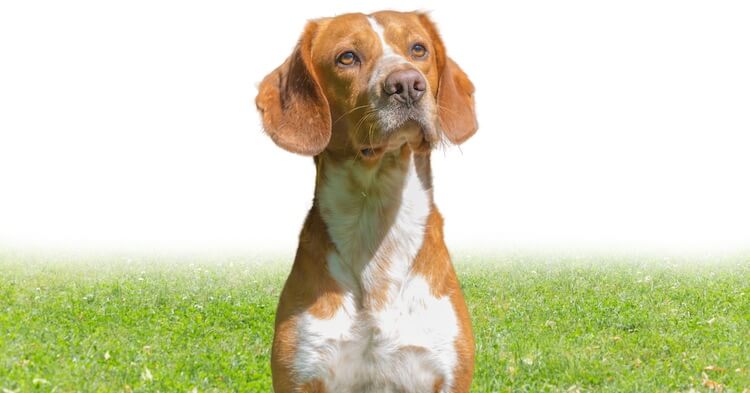
From Adobe Stock
Beagle Lab Mixes are generally healthy dogs, but like all breeds, they can be predisposed to certain health issues. Knowing what to watch for can help you provide the best care for your Beagador, ensuring they live a long and happy life. Let’s take an in-depth look at some of the most common health problems this hybrid breed might face and how to manage them.
Hip Dysplasia
Hip dysplasia is a condition that affects the hip joints, where the ball and socket don’t fit together properly. This misalignment can lead to discomfort, pain, and arthritis over time. Since both Beagles and Labrador Retrievers are susceptible to hip dysplasia, it’s no surprise that Beagadors might inherit this condition.
- Signs to Watch For: Be on the lookout for symptoms such as limping, a noticeable decrease in activity, difficulty standing up, reluctance to jump or climb stairs, and pain during movement. Sometimes you might see your dog bunny hopping or favoring one leg over the other.
- Preventive Measures: Keeping your Beagador healthy is crucial, as excess weight can put additional stress on their joints. Regular, moderate exercise helps strengthen the muscles around the hip joint. Providing joint supplements like glucosamine and chondroitin can also be beneficial.
- Treatment Options: Treatment can vary based on the severity of the condition. For mild cases, weight management, physical therapy, and anti-inflammatory medications can help manage symptoms. In more severe cases, surgical options like hip replacement might be necessary.
Ear Infections
Beagadors have those irresistibly floppy ears that we all love, but they can also be a breeding ground for infections. The shape of their ears can trap moisture and debris, leading to bacterial or yeast infections.
- Signs to Watch For: Symptoms of ear infections include frequent ear scratching, head shaking, redness or swelling inside the ear, and a foul odor emanating from the ear canal. You might also notice your dog tilting its head or showing discomfort when ears are touched.
- Preventive Measures: Regular ear cleaning is essential. Use a vet-recommended ear cleaner to gently clean your Beagador’s ears once a week, or more often if they swim frequently. Always dry their ears thoroughly after baths and swimming to prevent moisture buildup.
- Treatment Options: If your Beagador develops an ear infection, your vet may prescribe medicated ear drops or oral antibiotics. In chronic cases, more frequent ear cleanings and possibly even a change in diet to manage allergies might be necessary.
Obesity
Obesity is a common issue in Beagadors, especially given their love for food inherited from their Labrador parent. Maintaining a healthy weight is crucial for preventing a host of other health problems.
- Signs to Watch For: Watch for weight gain, difficulty moving, shortness of breath, and noticeable fat deposits, especially around the neck and base of the tail. An overweight Beagador might also have decreased stamina and less interest in physical activities.
- Preventive Measures: Feeding your dog a balanced diet and measuring portions is key. Avoid free-feeding and limit treats. Regular exercise, like daily walks and playtime, helps keep them fit. Use low-calorie treats for training and rewards.
- Treatment Options: If your Beagador is already overweight, consult your vet for a weight management plan. This might include switching to a lower-calorie dog food, increasing exercise, and monitoring their progress with regular weigh-ins.
Allergies
Allergies can be a pesky problem for a Beagle Labrador Mix, causing significant discomfort. These can be environmental, food-related, or due to flea bites.
- Signs to Watch For: Symptoms of allergies include excessive scratching, licking or chewing on paws, red or inflamed skin, frequent ear infections, and gastrointestinal issues like vomiting or diarrhea.
- Preventive Measures: Identifying and avoiding allergens is the first step. For environmental allergies, regular bathing and wiping down your dog after being outside can help. For food allergies, an elimination diet can pinpoint the offending ingredient. Regular flea prevention treatments are essential to avoid flea allergies.
- Treatment Options: Depending on the type of allergy, treatments can range from antihistamines and corticosteroids to special hypoallergenic diets and allergy shots. Regular vet visits can help manage chronic allergies effectively.
Progressive Retinal Atrophy (PRA)
PRA is a genetic condition that affects the eyes, leading to gradual vision loss. While it’s more common in certain breeds, it can also affect Beagadors.
- Signs to Watch For: Early signs of PRA include night blindness, dilated pupils, and a noticeable increase in clumsiness, especially in low-light conditions. As the condition progresses, your dog may become reluctant to move in unfamiliar areas.
- Preventive Measures: Regular eye check-ups with your vet can help catch PRA early. While there’s no cure, early detection can help you manage the condition better and make adjustments to your dog’s environment.
- Treatment Options: Unfortunately, there is no cure for PRA, but you can make your dog’s life easier by ensuring a safe and familiar environment. Vision aids and sometimes supplements that support eye health can be beneficial.
Costs of Owning a Beagle Lab Mix
From initial costs to ongoing expenses, it’s important to be prepared for what lies ahead. Let’s break down the costs associated with bringing a Beagador into your home.
Initial Costs
The initial costs of acquiring a Beagle Lab Mix can vary widely based on several factors, including where you get your dog and the supplies you need.
- Adoption or Purchase: If you adopt from a shelter, the cost is usually between $50 and $300, which often includes initial vaccinations and spaying or neutering. Purchasing from a breeder can be more expensive, ranging from $500 to $1,500, depending on the breeder’s reputation and the puppy’s lineage.
- Initial Vet Visits: Your new pup will need a series of vaccinations, deworming, and a thorough check-up. This can cost anywhere from $100 to $300.
- Supplies: Don’t forget the basics like a crate, bed, food and water bowls, collar and leash, toys, and grooming supplies. Initial setup costs can range from $200 to $500.
Ongoing Costs
Once you’ve brought your Beagador home, there are ongoing costs to consider to keep them healthy and happy.
- Food: A high-quality diet is essential for your Beagador’s health. Expect to spend between $30 and $60 per month on dog food, depending on the brand and your dog’s dietary needs.
- Routine Vet Care: Annual vet visits for check-ups, vaccinations, and flea, tick, and heartworm prevention can add up. Budget around $200 to $400 per year for routine care.
- Grooming: While Beagadors don’t require professional grooming as often as some breeds, you may still want to take them for occasional baths, nail trims, and ear cleaning. This can cost about $30 to $50 per visit, totaling $200 to $300 annually if done every few months.
- Pet Insurance: Considering pet insurance is a wise move to cover unexpected illnesses or injuries. Monthly premiums range from $20 to $50, depending on coverage.
- Training and Activities: Investing in obedience classes or activities like agility training can enhance your dog’s quality of life. Training classes typically cost between $100 and $200 for a series of sessions.
- Miscellaneous Expenses: Don’t forget about toys, treats, and replacement of worn-out supplies. These costs can add up to $100 to $200 per year.
Unexpected Costs
Be prepared for potential unexpected expenses that can arise from emergencies or special needs.
- Emergency Vet Care: Accidents and illnesses can lead to unexpected vet bills. Emergency visits and surgeries can range from $500 to several thousand dollars.
- Health Conditions: As mentioned, Beagadors can be prone to certain health issues like hip dysplasia and allergies. Treatment for chronic conditions can be costly, so having a savings fund or pet insurance can help manage these expenses.
FAQs: Get to Know the Beagle Lab Mix More
What is the average lifespan of a Beagle Lab Mix?
The average lifespan of a Beagle Lab Mix is typically between 10 to 15 years. With proper care, a healthy diet, regular exercise, and routine vet check-ups, your Beagador can enjoy a long and happy life. Genetics from both parent breeds contribute to their overall longevity.
Are Beagle Lab Mixes prone to barking?
Yes, Beagadors can be quite vocal, inheriting the Beagle’s tendency to bark and howl. They may bark to alert you of strangers, express excitement, or even out of boredom. Early training and socialization can help manage excessive barking, making them well-adjusted and quieter pets.
How much does a Beagle Lab Mix shed?
Beagadors are moderate shedders, with shedding increasing during seasonal changes. Their short to medium-length coat requires regular brushing to manage loose hair and reduce shedding. Weekly brushing can keep their coat healthy and minimize hair around the house.
Are Beagle Lab Mixes good with children?
Absolutely! Beagadors are known for their friendly and gentle character, making them great companions for children. Their playful and affectionate demeanor ensures they get along well with kids, providing entertainment and loyalty. Always supervise interactions between dogs and young children to ensure safety for both.
Do Beagle Lab Mixes get along with other pets?
Generally, Beagadors are sociable and get along well with other pets, including dogs and cats. Their friendly nature makes them open to forming bonds with other animals in the household. Proper introductions and early socialization are key to fostering positive relationships with other pets.
What is the ideal home environment for a Beagle Lab Mix?
Beagadors are versatile and can adapt to various living situations, from apartments to houses with yards. They thrive in environments where they receive plenty of attention, exercise, and mental stimulation. Access to a secure outdoor space for play is ideal, but regular walks and indoor activities can also keep them content.
So, Is the Beagle Lab Mix Right For You?
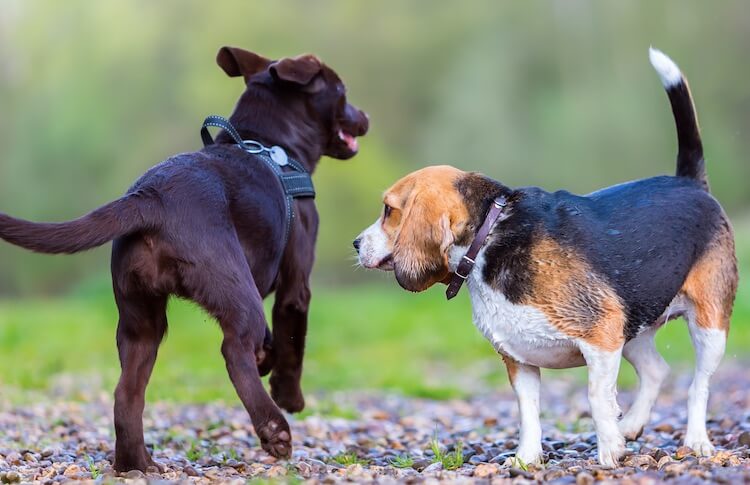
From Adobe Stock
The Beagle Lab Mix, or Beagador, is a delightful blend of energy, intelligence, and affection. They inherit the Beagle’s curiosity and the Labrador’s friendly demeanor, making them great companions for active individuals and families alike. These dogs are known for their playfulness, sociability, and eagerness to please. However, they also require consistent training, regular exercise, and a lot of social interaction to stay happy and healthy. If you’re ready for a loyal, energetic, and loving pet, the Beagador might be the perfect fit for your home.
Beagle Labradors Are For
- Active Families: Those who enjoy outdoor activities and have the time to provide regular exercise.
- People with Patience: Owners willing to invest time in consistent training and socialization.
- Dog Lovers: Homes that can provide plenty of companionship and interaction.
- Families with Children: Their friendly and patient nature makes them great with kids.
- Pet Owners: Those prepared for moderate grooming and regular veterinary care.
Beagle Labradors Are NOT For
- Sedentary Lifestyles: Homes that cannot provide enough exercise and mental stimulation.
- Busy Professionals: People who are away for long hours and can’t give the attention and interaction needed.
- Those Seeking Low-Maintenance Pets: Beagadors require regular grooming, training, and veterinary check-ups.
- Noise-Sensitive Individuals: Their tendency to bark might not be suitable for quiet environments.
- First-Time Dog Owners: While trainable, their sometimes stubborn nature might be challenging for those without prior experience.
Other Labrador Retriever and Beagle Mixes
If you’re interested in learning about other Lab mixes or Beagle mixes, check out the hybrid dog breeds below.
Lab Mixes
- German Shepherd Lab Mix
- Pitbull Lab Mix
- Blue Heeler Lab Mix
- Golden Retriever Lab Mix
- Rottweiler Lab Mix
- Border Collie Lab Mix
- Husky Lab Mix
- Australian Shepherd Lab Mix
- Labrabull
- Labradoodle Dog
- Boxador
- Mini Labradoodle
- Australian Labradoodle


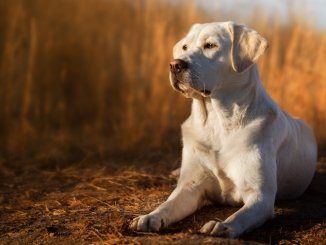
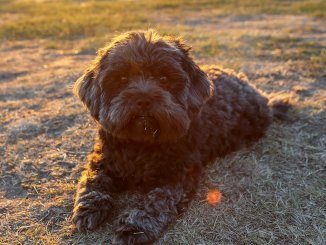
Be the first to comment